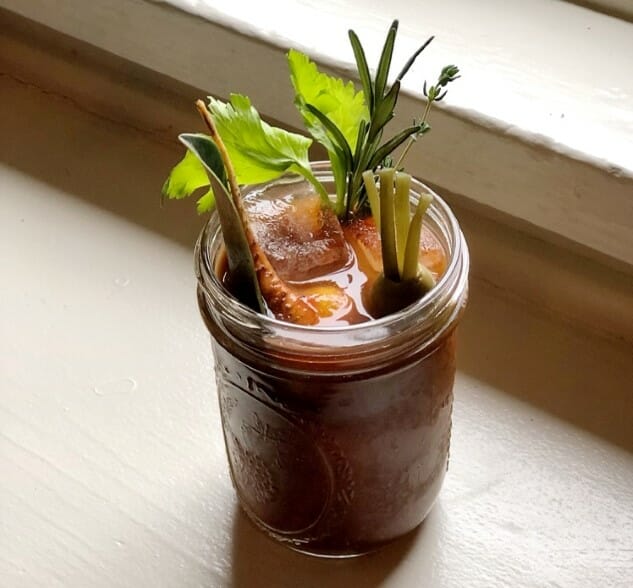Garden to Glass: A Forager’s Delight for Cocktail Hounds
Photo via Turner Publishing Co.
I’ve never met bartender Mike Wolf, but he had me at “Welcome to the terroir-dome.” Garden to Glass, his first book, is a thoroughly lovely and seriously inspiring look at leveraging homegrown ingredients to amp up your home bartending situation, but it’s more than that, containing all kinds of interviews and anecdotes as well as recipes and instructions.
This book is unbelievably charming and accessible, and it’s full of the kind of part-artsy, part-homesteader spirit shared by several of my favorite writers. Want to know how to make candied angelica? You can learn. Want to know what the hell angelica is and why you would want it, candied or otherwise? Ditto. This book will answer burning questions such as “But what do I do with the Biblical plague of mint that has turned my entire yard into a deliciously fragrant apocalyptic hellscape?” and “I want to waste less of the groceries I buy; what can I do with these dill stems?” (spoiler: use them as tasty, festive straws!). “So like can I eat the mulberries growing on that tree in the park?” and “Is there a redeeming value to the dandelions currently laying waste to my lawn?” are also covered amply (yes, and absolutely respectively). If you want to make a Pimms punch people will still be talking about long after lawn party season has gone into hibernation, Wolf will embolden you to look to the shocking wealth of delicious botanicals hiding in plain sight in your yard or along local sidewalks and trails. If you’ve always wished someone would make a nasturtium vodka, pick up this book and that someone can be you. If food waste is a bee in your bonnet (and yo, it should be), this book will give you ideas on how to take a few snazzy, artful steps toward reducing it. Whatever your perspective or prism, if you like a good cocktail, or appreciate botany, or just always want to know how things are made-Garden to Glass is a wise, unpretentious, inviting read.
Those of us who garden, and especially those of us who love growing herbs, already know the funky little thrill of belonging and self-sufficiency that comes with successfully turning little tiny seeds into plants that can feed us, delight our senses, even heal our ailments. If you are one of those people, this book will come across as a huge, happy affirmation to keep doing what you’re doing (and maybe plant some borage if you don’t already grow it!) and to follow through on that instinct to craft bitters from your celery tops or citrus peels, or to infuse vodka with the amazing crop of heady-smelling violets that popped up in the yard. If you’re a novice, and you read this book and feel no desire to put some strawberries and basil in a windowsill pot, I’d rather recommend reading it again.
Wolf discusses biodynamic farming practices, history, family life, foraging and more. He alternates between musings and eminently practical instruction, all in a tone of affable enthusiasm and approachable smarts. His writing is openhearted and casual, keenly descriptive and indicative of a compellingly wide-ranging intellect. This is a forager’s book for sure-and I include those whose foraging ground is actual books; you can open it at random and harvest something good from whatever falls open. His curiosity is broad and totally infectious.
Here’s the deal: If you love wine and spirits, you are already in a deeply enmeshed relationship not only with botanicals but with history. Like perfumery, distillation and fermentation are ways of preserving moments-preserving ingredients, sure, but just as wine is an expression of a particular grape harvest, the infused vodka in your cupboard might preserve the decadent sugary scent of the giant bank of honeysuckle you found running riot over a fence last summer. When you drink nocino you are participating in a conversation that goes back to before the Romans, and when you make your own, you’re participating in a practice with complex historical and anthropological roots, rife with symbolism and power. Obviously you can still enjoy the way it tastes without knowing that tradition decrees the green walnuts be harvested on June 24th, the feast day of St. John. But are you really willing to argue that the experience can’t be enhanced by being more aware of the connections, the history, the confluence of myth and science that go into your drink? I’m not.
-

-

-

-

-

-

-

-

-

-

-

-

-

-

-

-

-

-

-

-

-

-

-

-

-

-

-

-

-

-

-

-

-

-

-

-

-

-

-

-









































